Reflections: Educating the Heart

This is the third part of a four-part series with the Dalai Lama Center's founding director Victor Chan. He looks back at the 2009 Vancouver Peace Summit, a global event that brought five Nobel Laureates and many more world-renowned thinkers and leaders in social transformation to Vancouver to talk about creating a more compassionate, peaceful world.
On the second day of the Vancouver Peace Summit, the two morning dialogues centred around the idea of educating the heart. The first panel came together to discuss the link between creativity and well-being while the second panel spoke of the importance of heart-mind education.
Victor Chan, founding director of the Dalai Lama Center, had a special backstage view of the session. Here, he shares some of his reflections from this dialogue.
Creativity and Well-being:
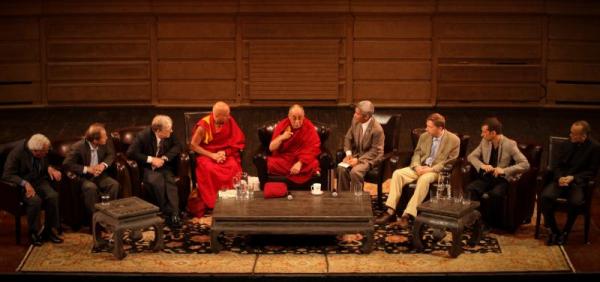
On the difficulty of translating the idea of creativity in Tibetan.
My challenge, and I had some sleepless nights about it, is that creativity is something that is very difficult for the Dalai Lama to relate to. The word, “creativity”, does not actually exist in that sense in Tibetan. Of all the panels that we put together, I was quite worried about this particular one.
But I thought it would be good to bring such a diverse group of people together – a Nobel physicist (Murray Gell-Mann), Sir Ken Robinson, who’s whole being is geared towards creativity, along with his collaborators at the Blue School, the Blue Man Group and Daniel Siegel – when we bring people in like that and pair them with His Holiness and Eckhart Tolle, the spiritual types, then something interesting happens.

On the creative potential of children:
I think this goes back to something that not only Sir Ken, Daniel Siegel and the Blue Man Group believe in, but something his Holiness believes in, that when we are born, we are born with huge creative potential. When you have a mind that is a blank slate, a mind that is not an expert’s mind, everything is possible. Sir Ken’s take is that we are born with this tremendous ability to be creative and he often tells the story of this little girl, 6 years old, who is drawing very intently in the classroom, and the teacher was quite surprised at her enterprise and she asked her what she was drawing. And the little girl said, ‘Well, I’m drawing a picture of God’. And then the teacher said, ‘Yes, but nobody knows what God looks like.’ The little girl says, ‘Well, in a moment they will.’
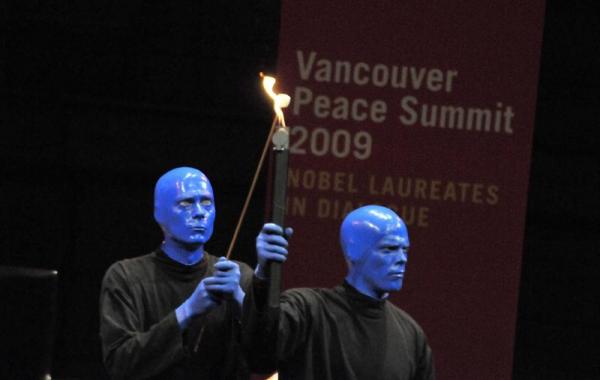
On how modern education limits creative potential:
The potential of kids to think out of the box to get away from linear thinking is quite amazing. However, all of this potential is leached away as they get educated. As Sir Ken was saying, he considered that our education is stagnating in the Industrial era, that the way that we teach people now is not all that different from how they were taught in the Industrial age. We have assessments, he have tests, we have proper answers to everything and we are sending our kids through a very straight and narrow path and what he is saying is there is a diversity of ways of learning.
That’s why Sir Ken and Daniel Siegel joined forces with the Blue Man Group to create this little school in Manhattan called the Blue School, where kids are encouraged to throw things around, splash paint and it’s a totally different kind of learning environment than your usual kindergarten and elementary school. So it’s not to say that we do not value academic achievements, that we do not value literacy and numeracy and so on, but what we are saying is that this need to be balanced with other things like music, art, dance that jogs our creativity. This is totally complementary to a more cognitive type of education.

On how sports, creativity and mindfulness intertwine:
Murray Gell-Mann started to talk about rugby, how rugby was created simply because someone did not follow the rules and started to run with the ball with his hands when they were playing soccer. What was totally unexpected was how Eckhart Tolle followed that up with a discussion of soccer and the taking of a penalty shot. He said that if you deliberate and you allow yourself to be centered, to be transported to a space where you’re totally focused, you give yourself some time to get the cobwebs out of the way. That’s why the percentage of your shots going into the goal is much higher then if you just run up to the ball and kick it. Of course, it was quite funny when Sir Ken said that he had trouble wrapping his mind around the idea of Eckhart waiting 10,000 hours to kick the ball and still missing the net.
Heart-Mind Education: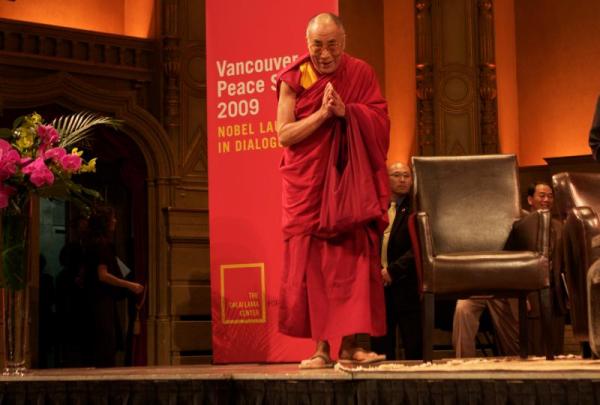
On the importance of balancing the education of the mind with the education of the heart:
The Dalai Lama has always been talking about the idea of educating the heart. What he says essentially is that we should not forget the academic side of learning, that to live in this world we need math, we need language, the foundational elements of acquiring knowledge and acquiring skills, engineering, computer science, biology. But this should be tempered and balanced with a kind of learning that is more holistic, that allows us to bring the full flowering of our humanity to the surface. In order to do this we must feel good within ourselves. We must feel good to be part of a group. So, to have a true sense of well-being, a true sense of satisfaction, it’s very important for us to be grounded, to be centred.
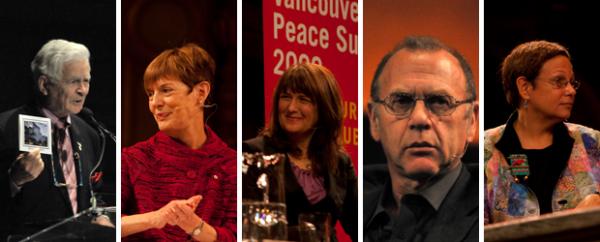
On the panel's rich British Columbian roots:
The panel started with an introduction from Ike Barber, someone who has made a significant contribution to education in B.C at the university of British Columbia and many other centres of higher education. Secondly, we had Martha Piper, who for eight years had been the President of UBC. It is quite widely acknowledged that she took the university to a much higher plane. Right now, UBC is ranked among the top 30 or 40 universities in the entire world. So I think she has achieved something really phenomenal during her tenure.
Kim Schonert-Reichl, a person I have been working with for many, many years, has been working on research with some of the best people in North America who have the leading edge in social and emotional learning.
We have Clyde Hertzman whose work in looking at the entire population and measuring the attributes of well-being and the kind of factors and elements pertinent to the development of young people is quite unique and unprecedented throughout the entire world. He is a world leader in education and in the development of children.
Adele Diamond, coming from neuroscience, is another person who is world-renowned. Both Adele and I were in Dharamsala last year having a scientific dialogue with the Dalai Lama.
It’s quite amazing that B.C. has all of these compelling personalities. This is one particular panel whose work and whose insights will be very pertinent to the future developments of the province and also to the Dalai Lama Center.
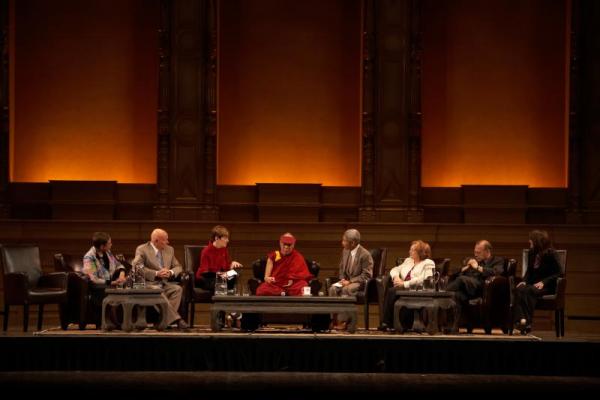
On His Holiness's wish in 2006:
What His Holiness asked for was an increased awareness of the importance of heart-mind education. And there’s been quite a groundswell since the 2006 conversation and also at the same time there are an increasing number of teachers who have this particular focus of enhancing the social and emotional development of young people.
Kim Schonert-Reichl, for example, has a new initiative at UBC where she is training an entire new cohort of pre-service teachers in some of the key elements of enhancing social and emotional learning and development. We also benefited from people like Mary Gordon, who was in the 2006 dialogue and whose work has been very significant in the experiential learning of empathy and compassion through her Roots of Empathy program. In the program, students have benefited from having a sustained relation with small babies in the classroom so that the idea of empathy and compassion is not an abstract concept, but rather hands-on and very experiential.
For a sneak peek of the Educating the Heart session, check out the video below:
You are missing some Flash content that should appear here! Perhaps your browser cannot display it, or maybe it did not initialize correctly.
You are missing some Flash content that should appear here! Perhaps your browser cannot display it, or maybe it did not initialize correctly.
You are missing some Flash content that should appear here! Perhaps your browser cannot display it, or maybe it did not initialize correctly.
Stay tuned for the next installment: Women and Peace-building
And if you missed it, the last installment was Nobel Laureates in Dialogue: Connecting for Peace.







Comments
Post new comment